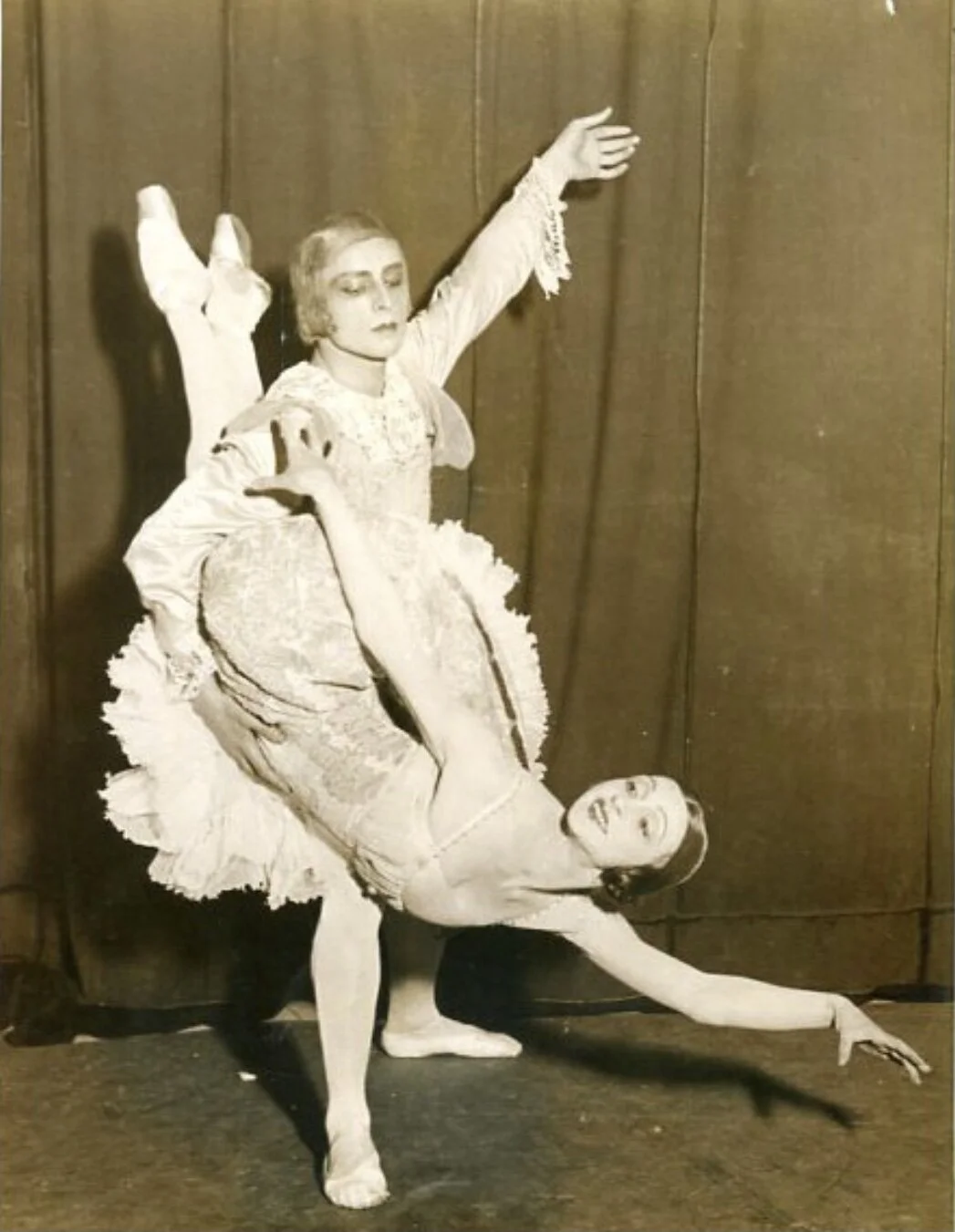Vera Nemtchinova and George Balanchine in the Diaghilev “Aurora’s Wedding”
1, 2, 3. George Balanchine as Prince Désiré (a.k.a. Charming) partnering Vera Nemtchinova’s Princess Aurora in the Diaghilev Ballet production of “Aurora’s Wedding”? Who knew of Balanchine dancing a princely role?
This photograph, very probably from 1925, and its identification reached me yesterday from my friend and colleague Robert Greskovic. Today he forwarded me this cast-list from our friend and colleague Andrew Foster , who believes this London season was the only occasion on which Balanchine partnered Nemtchinova.
The cast list contains many other points of fascination: “Nina Devalois”, Danilova, Doubrovska, Nikitina, Sokolova, Tchernicheva, and (!)Chamie, as the seven(!) fairy godmothers (Chamie, born in Odessa, danced until 1943, became a choreographer, and died in 1953); the prince’s variation choreographed by Nijinska; “Nina Devalois” doubling as one of Florestan’s sisters (Nijinska’s rearrangement of the Jewels divertissement) with Vera Savina (the English-born first Mrs Leonide Massine, but in the year of her divorce); the fourteen-year-old Alicia Markova as Red-Riding-Hood; Savina also dancing as Princess Florine with the legendary Bluebird of Stanislas Idzikowski (soon to become a greatly admired teacher and heir to the teaching tradition of Enrico Cecchetti), alternating with Nikitina and Dolin.
Nemtchinova (1899-1984), most famous now as the original Garçonne in Nijinska’s “Les Biches “1924), later engaged Balanchine as her choreographer. In 1930, he made “Aubade”, to a recent score by Francis Poulenc for piano and small orchestra, as a version of the Diana-Actaeon myth, with her as Diana (Actaeon was one Alexis Dolinoff) and six women as her companions. Poulenc let it be known that he found Balanchine’s treatment of the music inferior to the 1929 one by Nijinska. Balanchine had recently crossed swords with Prokofiev over his setting of “Prodigal Son” in 1929; nettled, he never again used music by either Prokofiev or Poulenc. (But he was still thinking of a new Diana-Actaeon ballet in 1934, as Lincoln Kirstein records in his diary. We may presume the idea of Diana the Huntress eventually fed into his 1962 choreography for Hippolyta in “A Midsummer Night’s Dream”.)
Nemtchinova’s first husband, Nicolas Zvereff or Sverev, is one of the cavaliers in this cast. Her second husband was the great teacher Anatole Oboukov (1896-1962), for some the most admired of the many important teachers at the School of American Ballet. The apartment he shared with Nemtchinova had a small courtyard; a colour film exists of her, in Garçonne costume, bourréeing across it in a brief quotation of “Les Biches”. (I’ve seen this in the collection of the New York Public Library for the Performing Arts.)
In 1949, Margot Fonteyn and Frederick Ashton came with the Sadler’s Wells Ballet to New York; shortly before their celebrated and epoch-making opening night, they were walking in the city with the American dancer Dick Beard, who had been Ashton’s lover in 1947-1948 and who was now a member of New York City Ballet. Fifty years later, Beard told me that, as they walked, Ashton suddenly said “Oh, that’s where Nemtchinova lives! She was a famous Aurora. Margot, perhaps you could go to her for coaching?” Fonteyn, who was going through what she later described as the most prolonged bout of stage fright of her career, went very pale and said tensely “I think this is the wrong moment for further coaching, Fred.” But Beard told me that Ashton was deliberately adding a further element of terror for Fonteyn with that remark: he knew her intimately, and knew that she rose to her greatest when terrified. Certainly her 1949 opening-night Aurora passed into legend.
Tuesday 23 March


